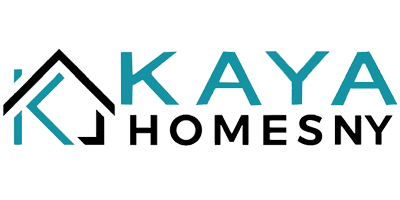Buying a home on Long Island is a big accomplishment, but it all begins with the million-dollar question of: how much money will you need for a down payment? The amount of money required for a down payment has just become too significant now that property values continue to rise in Nassau, Queen, Brooklyn, and Suffolk counties.
Whether you’re trying to find that perfect little starter home in Merrick or your dream waterfront property in Malba, the amount for your down payment can vary dramatically based on so many different factors.
The following is a comprehensive guide to all the things you need to know about down payments in the Long Island real estate market: from minimum requirements, to strategies to save, to special programs designed to make your dream of homeownership come true. Let’s dive into the details of what it will take to secure your slice of Long Island living.
Understanding Down Payments
A down payment is the part of the purchase price that you pay out-of-pocket when purchasing a home, and the remaining amount is often financed by a mortgage. It showcases your financial dedication to the house, thereby securing the loan to the lender. In Long Island’s highly competitive market, the size of your down payment will show your financial preparedness and buying power.
Thus, down payment amounts will have a bearing on the approval of a mortgage, considering lenders prefer larger down payments, believing they are indicative of financial soundness and lower risks. A higher down payment can get you better interest rates, thus letting you save more money over the life of your loan. This is most relevant if you plan to buy or sell a house on Long Island, since mortgage rates and their terms may impact your decision.
Typical Down Payment Percentages
Down payments in 2023 averaged 15%, while first-time buyers put down 8% and repeat buyers went a little higher at 19%. Options as low as 3% are now available, thus making the traditional 20% down payment requirement isn’t as strict as it once was.
Common with conventional loans is a 3% down payment, but if below 20%, it requires private mortgage insurance (PMI). So, on homes valued between $200,000 and $300,000, that’s about $6,000 to $9,000 upfront. A 5% down payment on a $400,000 home amounts to $20,000, still requiring PMI. A 10% down payment, like $50,000 for a $500,000 home, reduces both PMI costs and your monthly payments. The general rule of thumb is that one has to put down 20% to avoid PMI and get other better loan terms, such as $200,000 on a $1 million home.
Types of Loans and Their Down Payment Requirements
Buying a house requires an understanding of the different loan options available and how much each of these will require for a down payment. Each type comes with different terms, which, in turn, affect how much you need to save upfront.
Conventional Loans
Conventional loans make provisions for down payments, which can be as low as 3% for qualified first-time buyers. Given through private lenders, they require at least a credit score of 620, with the best rates usually going to candidates with credit scores over 700. The debt-to-income ratio should, if possible, be less than 43%, although some might allow higher ratios if there is a strong compensating factor, a useful insight when aiming to buy or sell a house in Long Island.
Jumbo Loans
The jumbo loan is designed for high-cost properties that lie beyond conforming limits, and requires a minimum down payment in the range of 10% to 20%. Due to the more conservative lending criteria, the borrower requires a higher credit score, something around 700-720, with adequate liquid cash reserves to pay several months of payments.
FHA Loans
The Federal Housing Administration-insured FHA loans are available for lower-income borrowers who need flexible credit. They require a down payment of 3.5%, in case the borrower has a credit score of 580+, or 10% if the scores are between 500 and 579.
VA Loans
VA loans are for veterans, active-duty members, and eligible surviving spouses, generally requiring no down payment. The applicants must have service qualifications and obtain a certificate of eligibility. Most importantly, VA loans avoid PMI, making home ownership more affordable for veterans.
USDA Loans
USDA loans enable low-income rural homebuyers to qualify for a mortgage with zero down. Because the U.S. Department of Agriculture co-signs or guarantees the loan, you will not need to make a down payment. Income limits are as high as 115% of the area median, and the property must be in a USDA-designated area.
First-Time Home Buyer Programs on Long Island
Several programs available to help Long Island’s first-time homebuyers with down payments and closing costs will be discussed briefly below:
| Program | Assistance Amount | Eligibility | Requirements |
| Nassau County First-Time Homebuyer Down Payment Assistance Program | Up to $50,000 for down payment and closing costs | First-time homebuyers (no ownership in the last 3 years); income limits (e.g., $86,200 for one person) | Minimum $5,000 down payment, 15-year residency, mortgage counseling, and financing through a lender |
| Suffolk County Down Payment Assistance Program | Up to $30,000 for down payment assistance | First-time homebuyers; must meet income guidelines and secure a mortgage | Must occupy property for 10 years or repay assistance if moved earlier |
| Community Development Long Island (CDLI) First-Time Homebuyer Grant Program | Deferred loans between $25,000 and $40,000 based on family size and income | Income must be below 120% of area median; property in Nassau or Suffolk County | Completion of Home Buyer Education class required; part of funds may be used for post-closing repairs |
Financial Planning for a Down Payment
The best strategy for saving down payment money on a house in Long Island has to be part of an overall solid financial strategy. The following are some practical steps to take that will help save effectively, particularly if one plans to buy or sell a house in Long Island in the near future.
- Set a down payment goal: Research home prices in your target area, then base your goal on 3-20% of the home’s price. Having a specific amount in mind will help you stay focused on the goal.
- Budget & Timeline: Look at how much you earn and what your expenses are, and decide from that how much you can save each month. Establish a timeline for when you want to achieve your goal and break it down into achievable monthly savings amounts.
- Open Another Savings Account: Keep your down payment money in a high-yielding savings account and build it up periodically.
- Cut Monthly Expenses: Reduce expenses on items not really needed, like subscriptions or eating out, and put that money toward the down payment fund.
- Increase Incomes: This might be by taking up part-time jobs or selling some things one no longer needs to boost savings.
- Pay off high-interest debt: Pay down credit cards or other high-interest debt to free up money that can go into savings.
- Look for Down Payment Assistance: Check for local and state programs that provide grants or loans to first-time homebuyers.
- Save with Tax-Free Options: First Home Savings Account, penalty-free retirement account withdrawals for down payment savings.
- Celebrate Milestones: Highlight your progress; celebrate small savings milestones to keep yourself motivated.
Common Myths About Down Payments
Most of the common myths regarding down payments are believed by buyers upon home purchase on Long Island. Some of these include:
- You need to have a 20% down payment: Even though 20% saves you from private mortgage insurance (PMI), you can purchase a house with as little as 3% to 5% down, depending on your loan type.
- Down payments cannot be from any source other than one’s savings: There are a few other options available for down payments, such as gifts from immediate family members. They need to be properly documented.
- Bigger Down Payments Always Save Money: While a big down payment can reduce monthly payments, the money often earns more if it is invested elsewhere.
- Only First-Time Buyers Can Get Down Payment Assistance: There are a variety of down payment assistance programs that offer down payment assistance to first-time and repeat buyers.
- All Down Payment Assistance Programs Require Longer Closing Times: Not all down payment assistance programs require longer closing times, but some may, and with proper planning and an experienced lender, delays can be minimal.
- Down payment assistance can only be used with FHA loans: Other eligible loan types for down payment assistance may include VA and USDA loans.
- Eligibility for Assistance is based on the price of your home: Most programs fund homes in more than one price category, not just lower priced homes, based on income limit and household size.
Conclusion
Understanding down payment options toward a Long Island home purchase doesn’t have to be an overwhelming experience. The traditional ideal is that 20% will be the down payment, but there are many different options if one’s financial situation calls for another approach. It is all about understanding your options and pursuing the right approach for you.
Ready to begin your home buying journey? Contact a reputable real estate agency today that can guide you through the complexities associated with Long Island’s housing market. Their agents will connect you with down payment assistance programs, recommend trusted lenders, and help you find the perfect home within your budget.
Frequently Asked Questions
Q: What’s the minimum down payment I can make on a Long Island home?
The minimum down payment rate varies by loan type, from 0% with VA loans, 3.5% with FHA loans, to 3% with some conventional loans. More down payments are between 5% and 20%, depending on one’s financial situation and the type of property being purchased.
Q: How long does it usually take to save for a down payment in Long Island?
The timeline will vary depending on your income, savings rate, and target amount. For the median-priced home, requiring 20% down, it could take 4-7 years of dedicated saving. However, with assistance programs for down payments and lower options for down payments, you may reach homeownership far more quickly.
Q: Can I use retirement funds for my down payment?
You may use retirement account funds, but be very cautious about tax implications and penalties. Some retirement plans can offer you loan possibilities to avoid penalty, but the others may ask you to pay taxes and fees for early withdrawal.
Q: Are there special programs for first-time homebuyers in Long Island?
There are a lot of programs to assist first-time buyers, some of which include Nassau and Suffolk County down payment assistance programs through the SONYMA loans and even federal programs. Assistance may be available, though the rules on eligibility vary.
Q: Should I wait until I have 20% saved for a down payment?
Not necessarily, while 20% down eliminates PMI and gives access to better loan terms, waiting to save this amount in Long Island’s appreciating market is sometimes something that can cause missed opportunities or higher prices later on. Consider your overall financial picture and what loan options exist.







